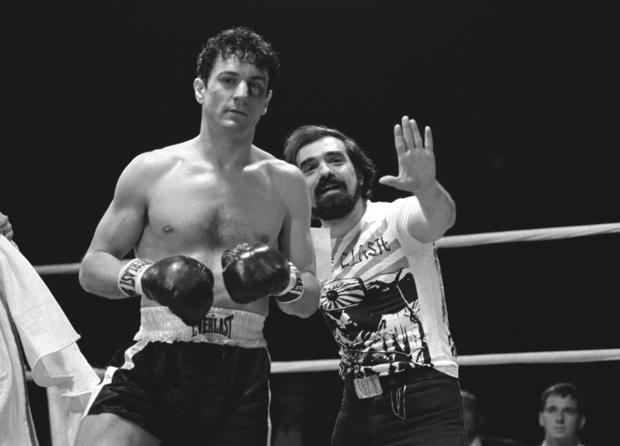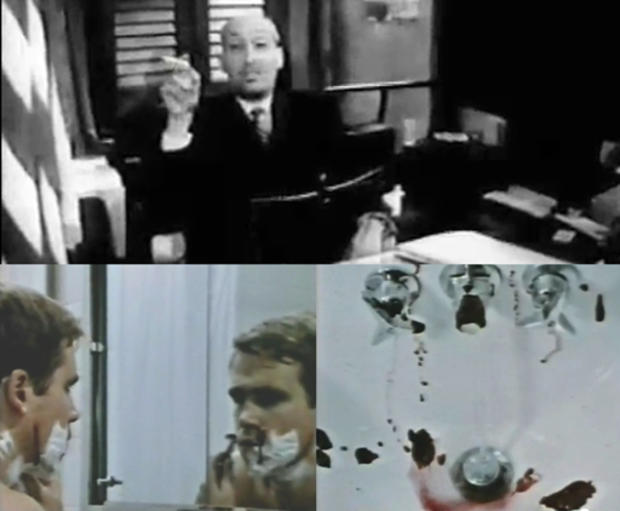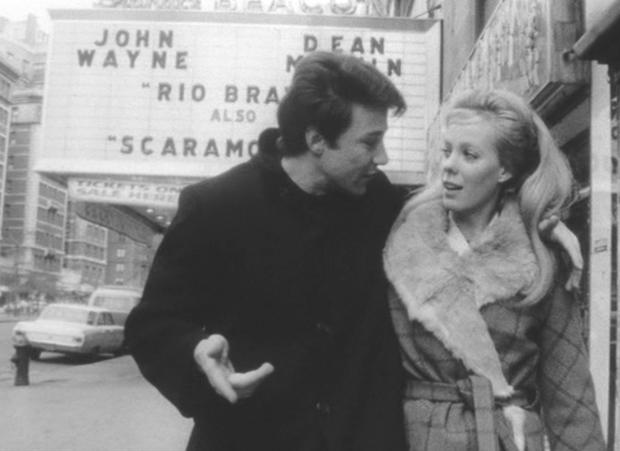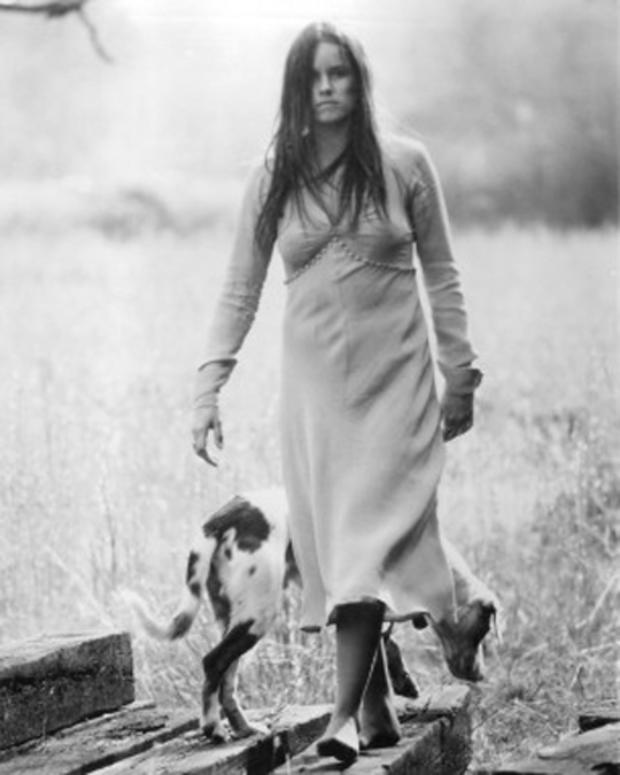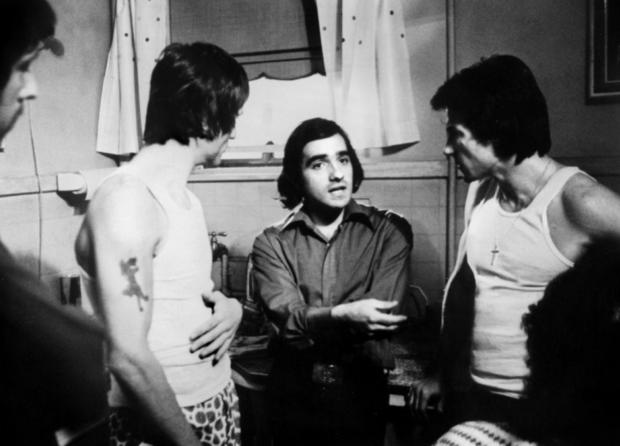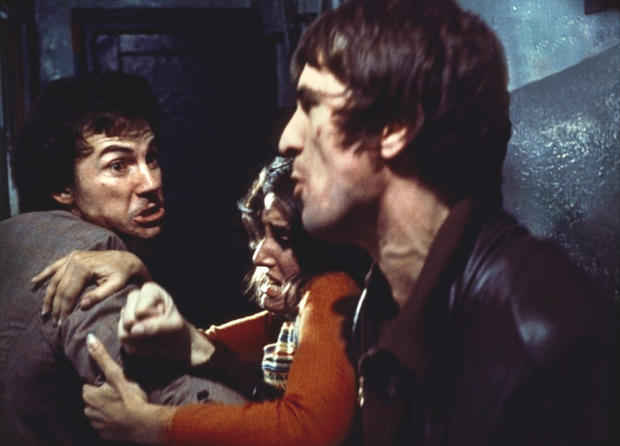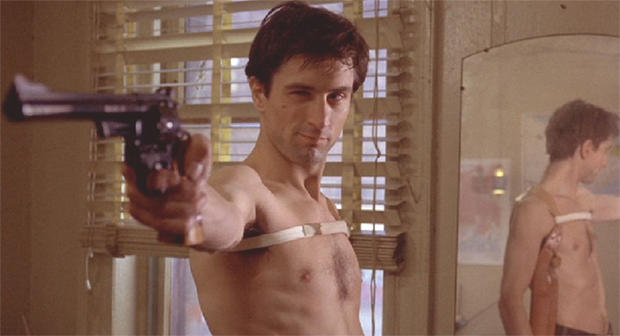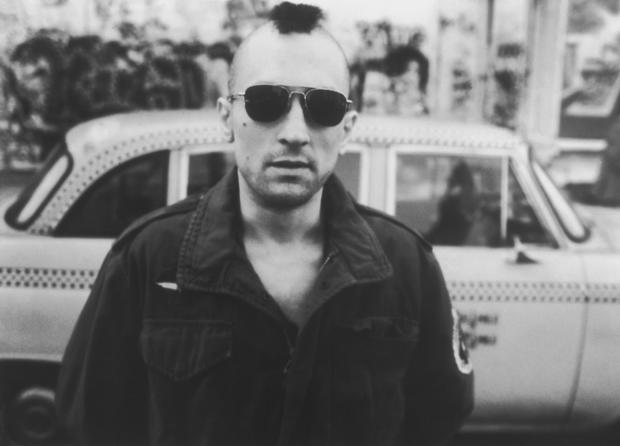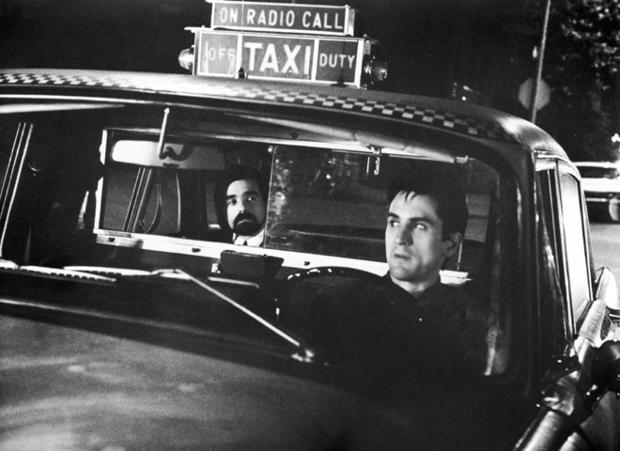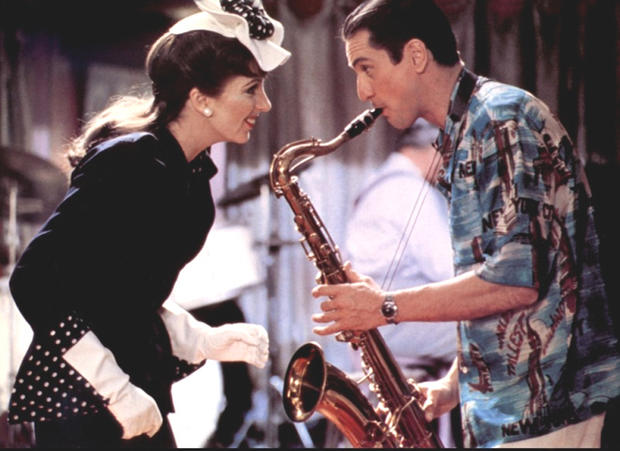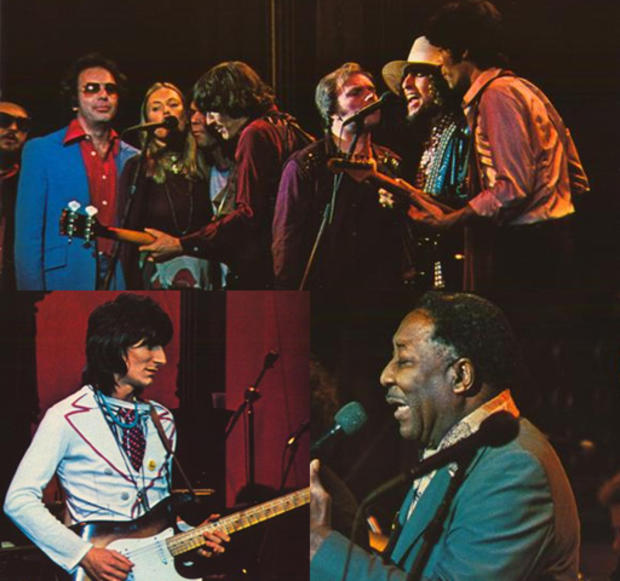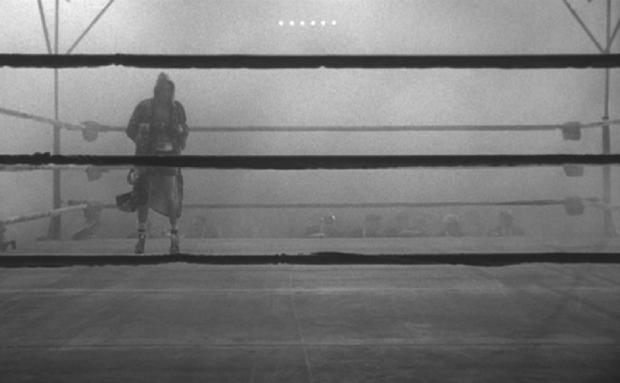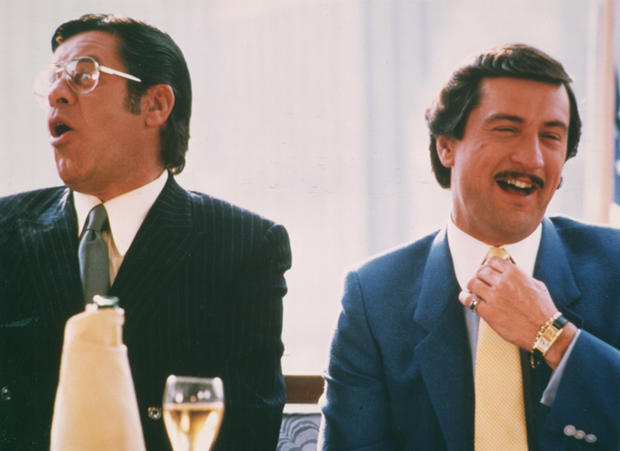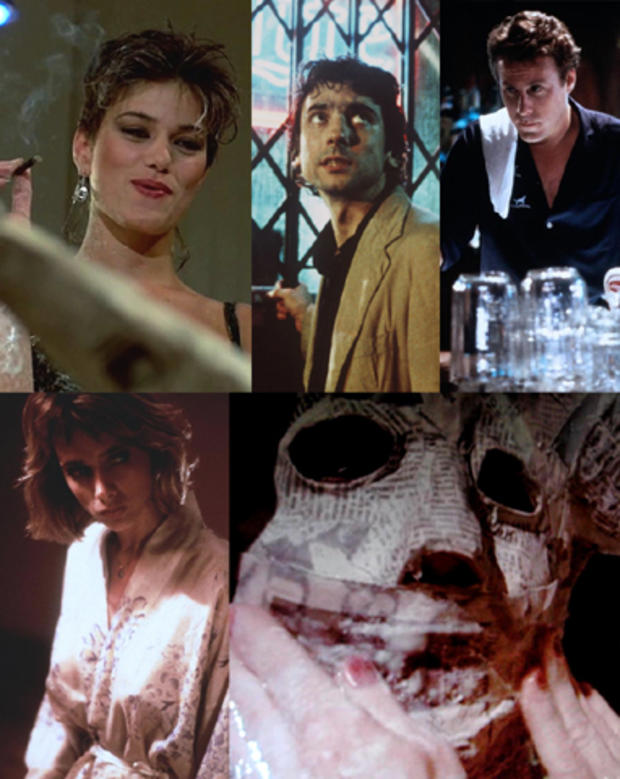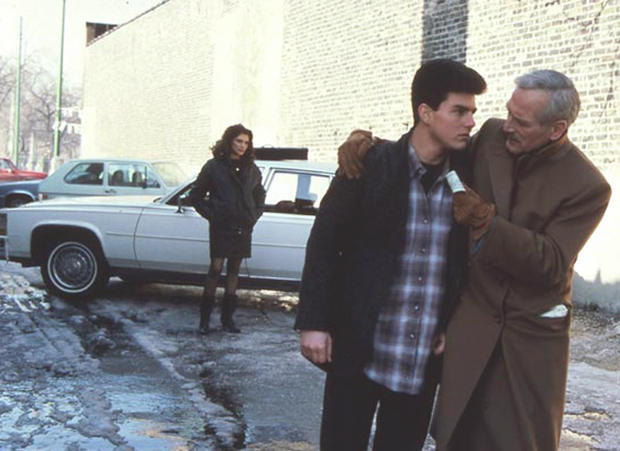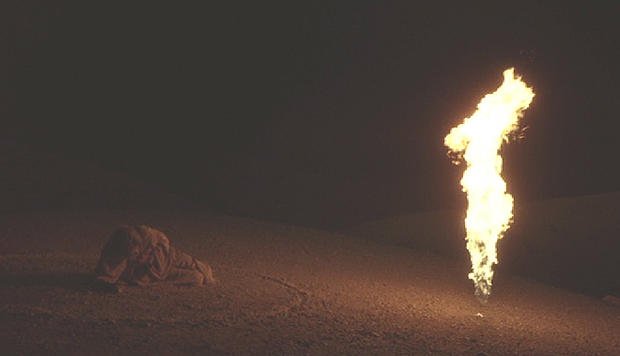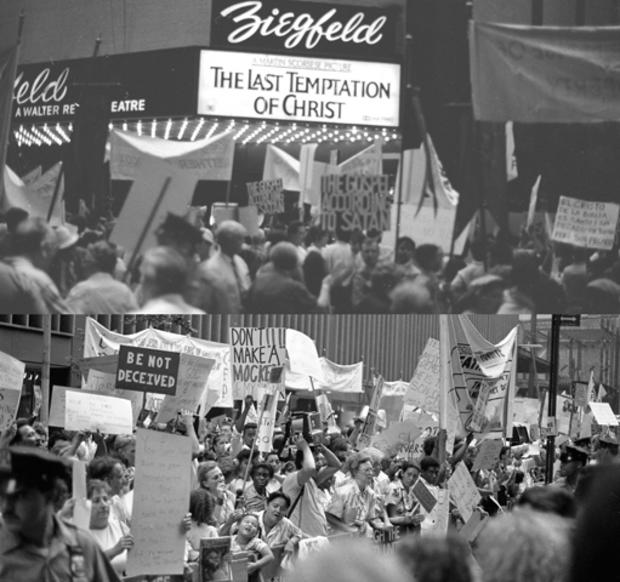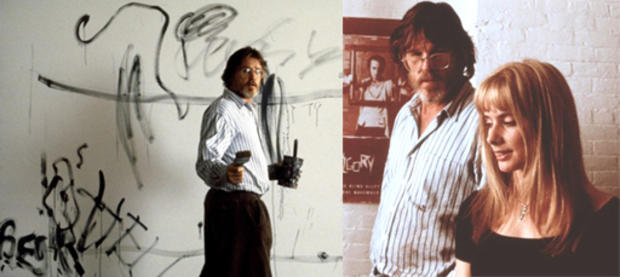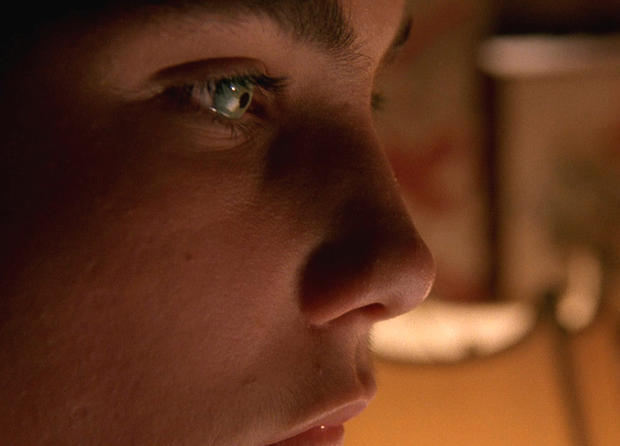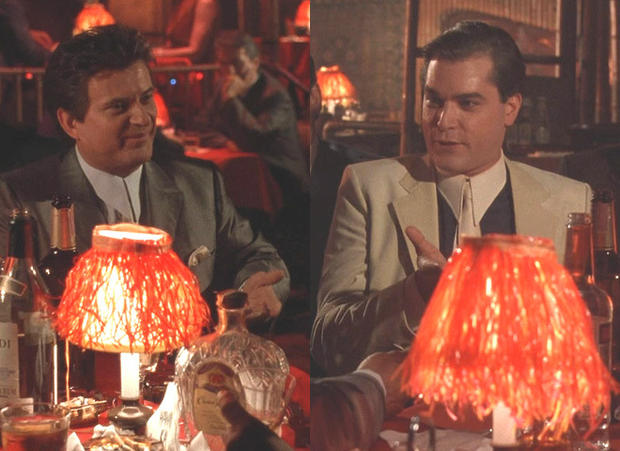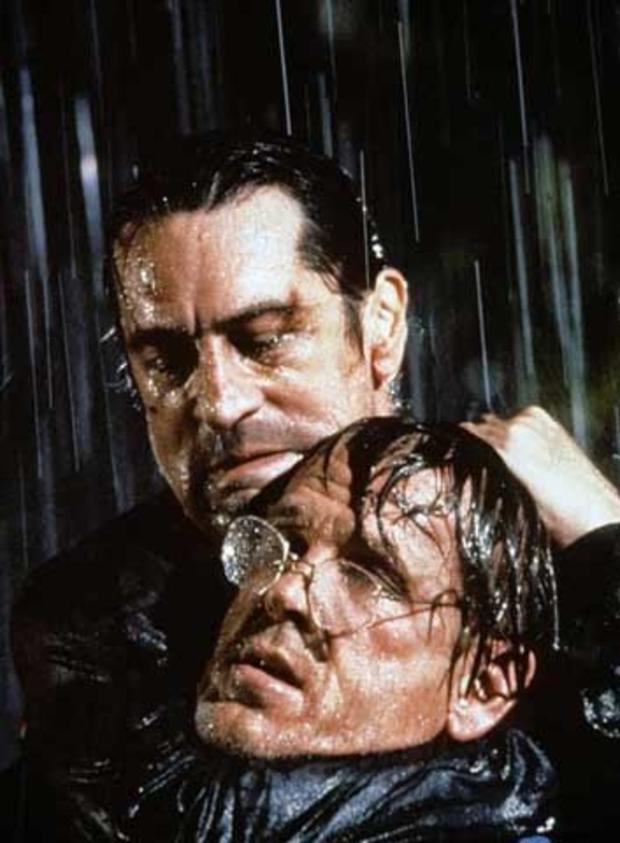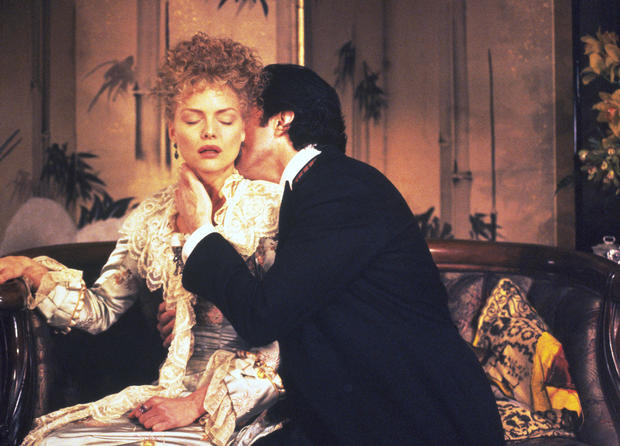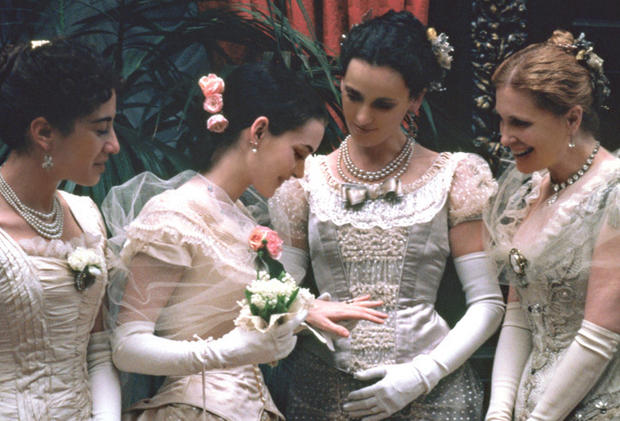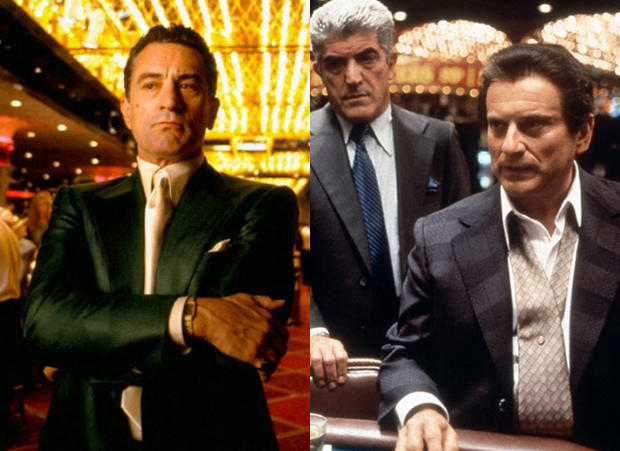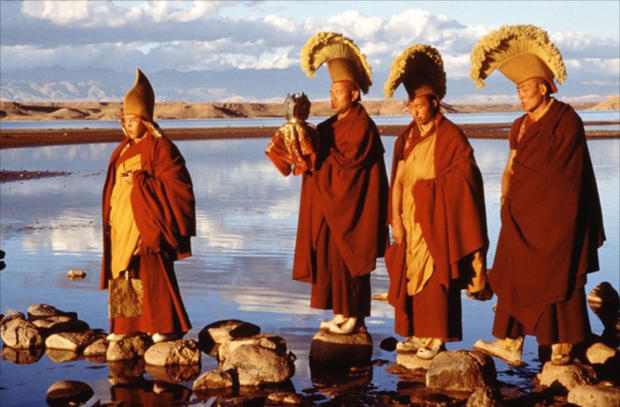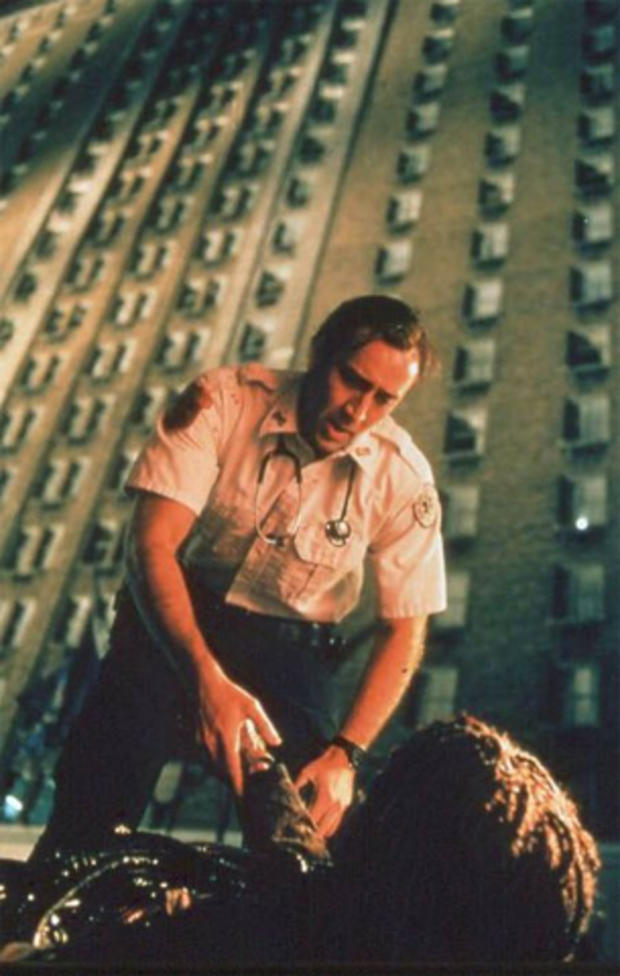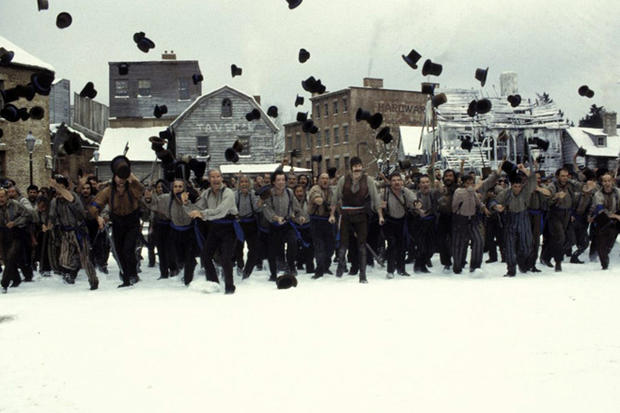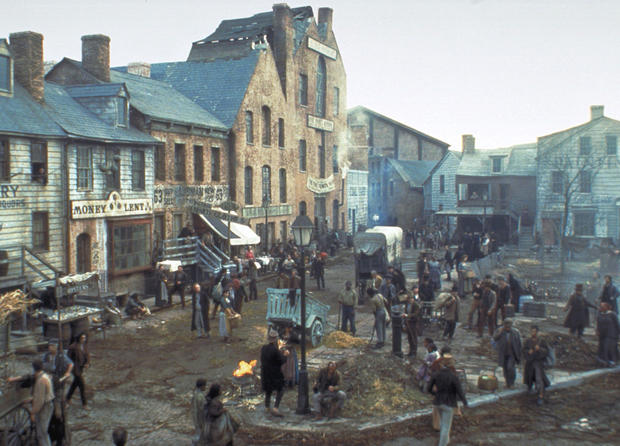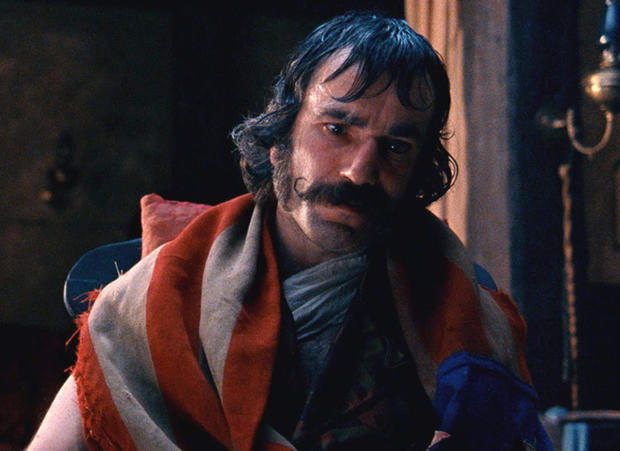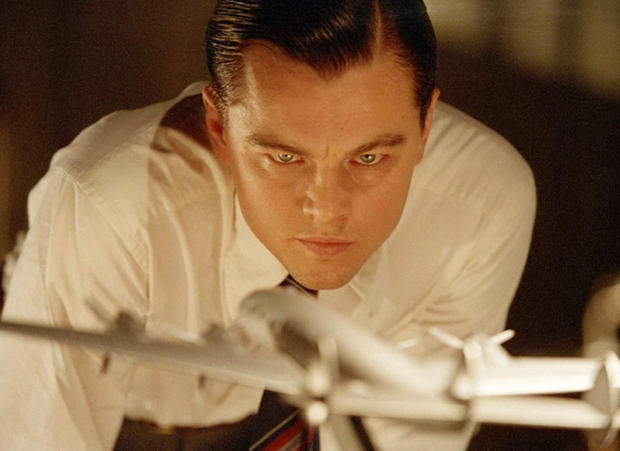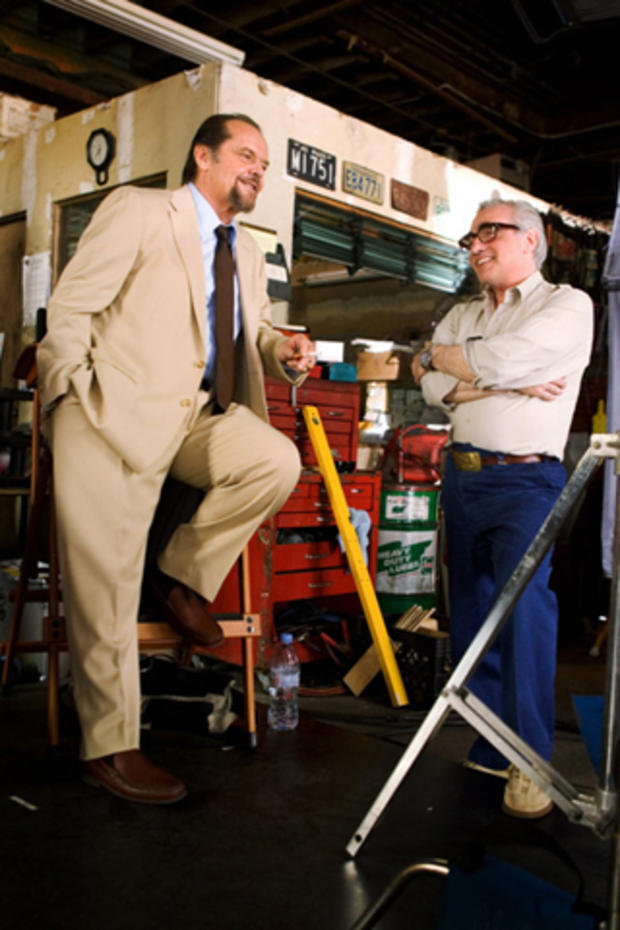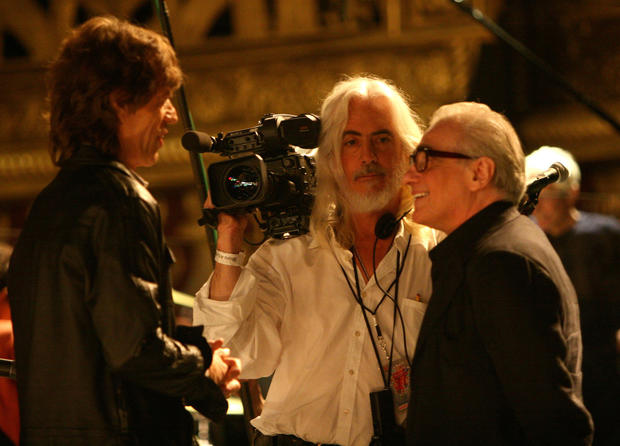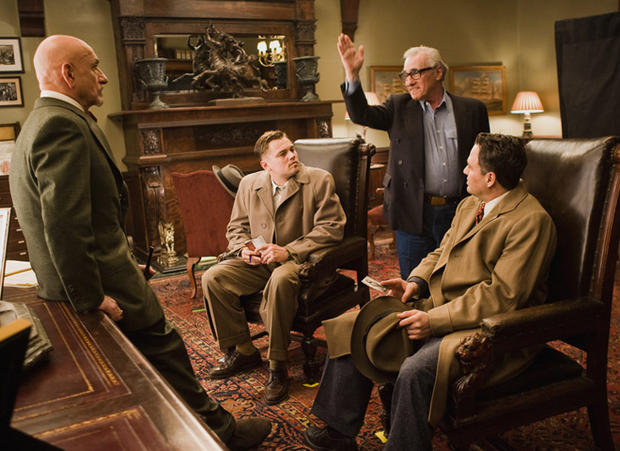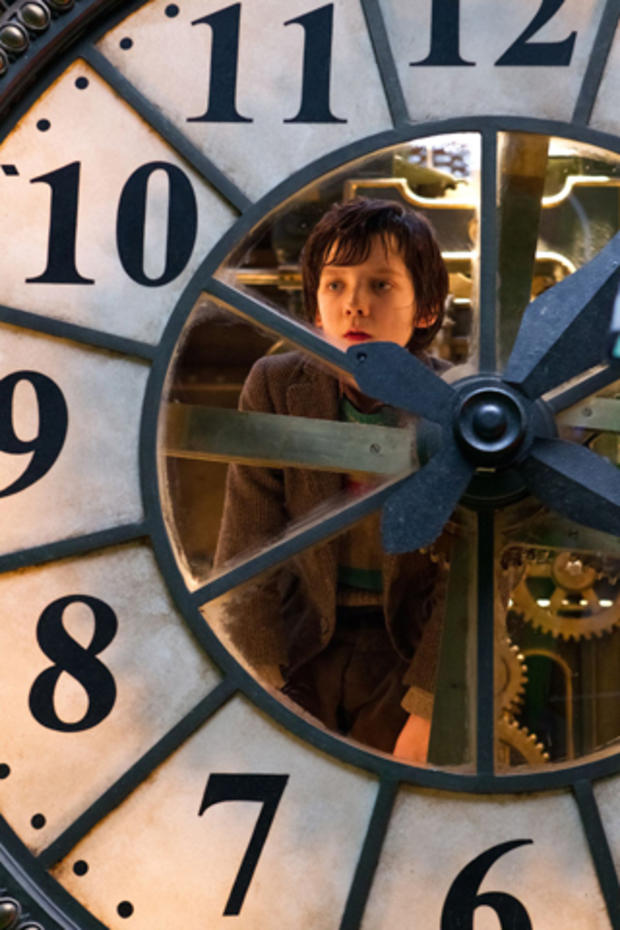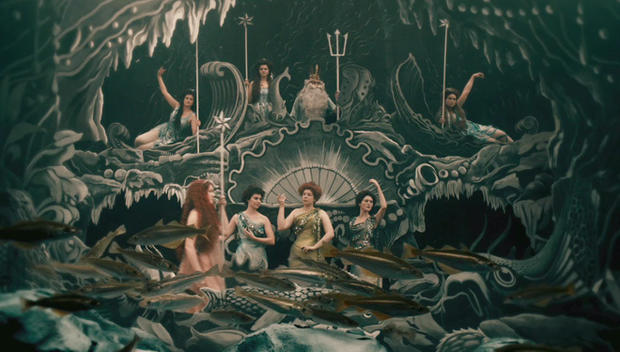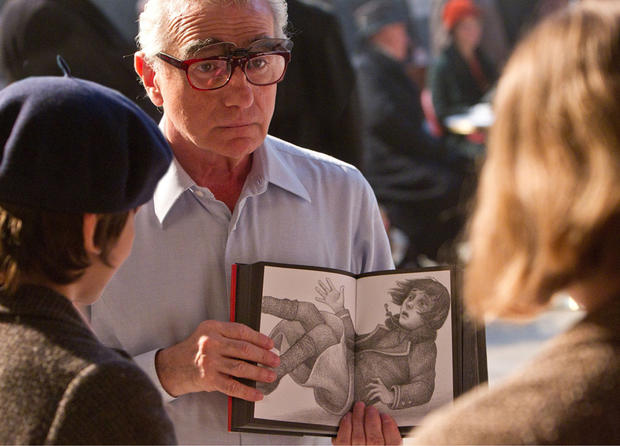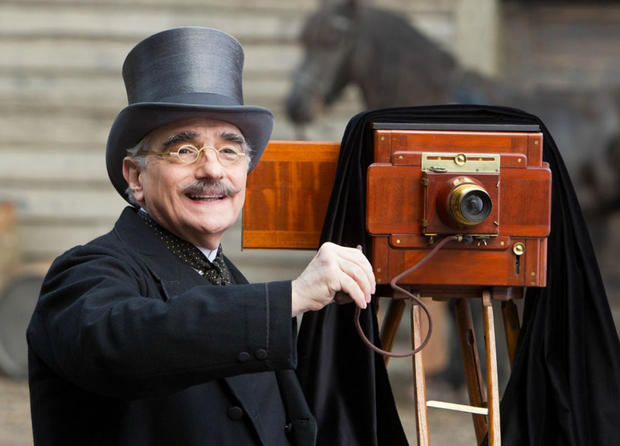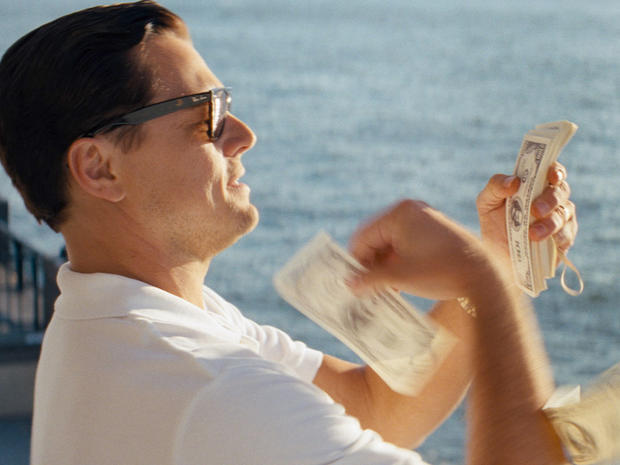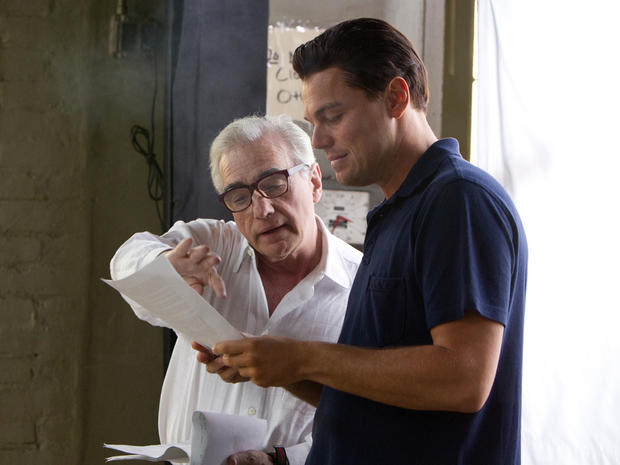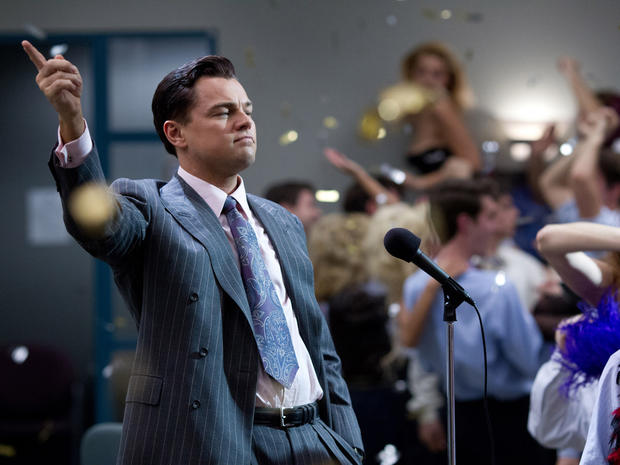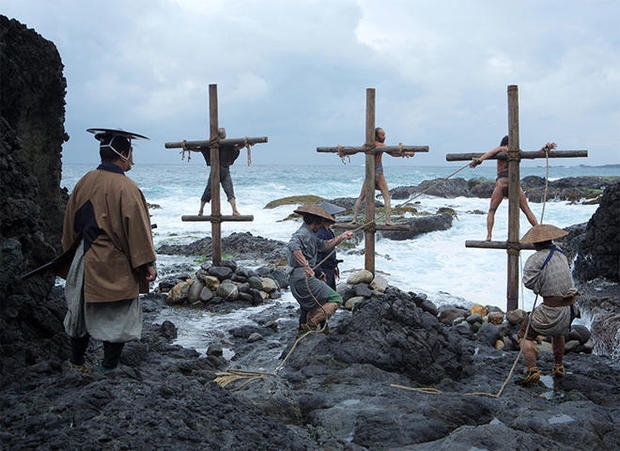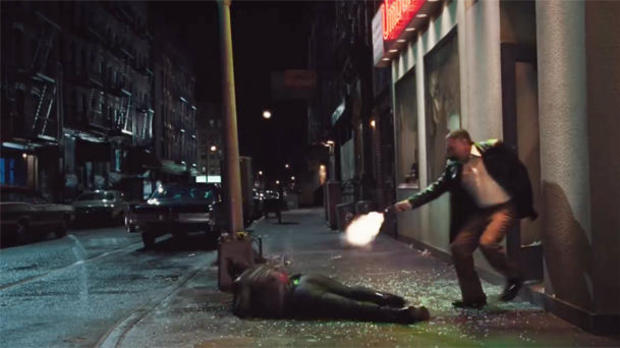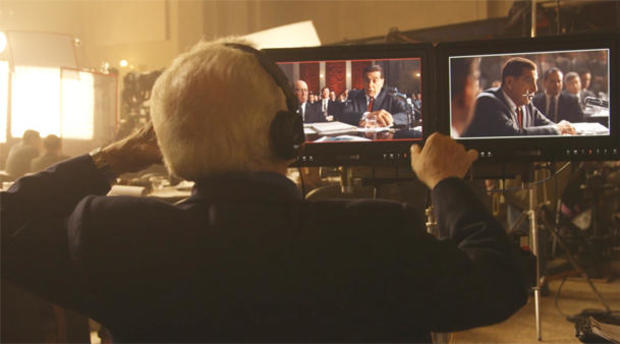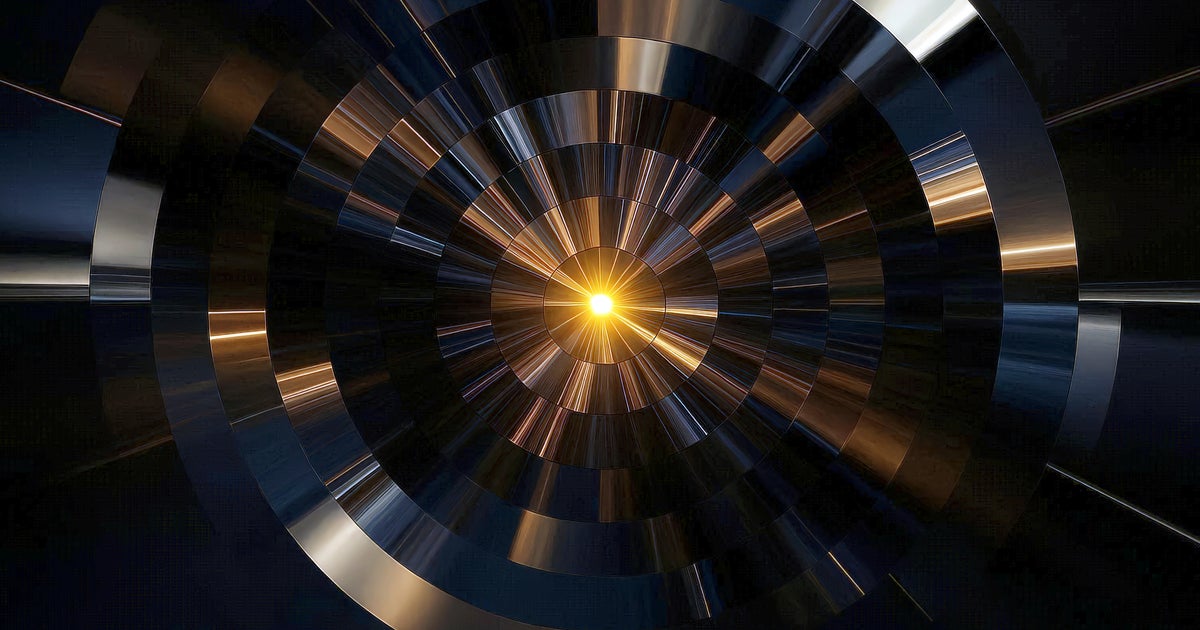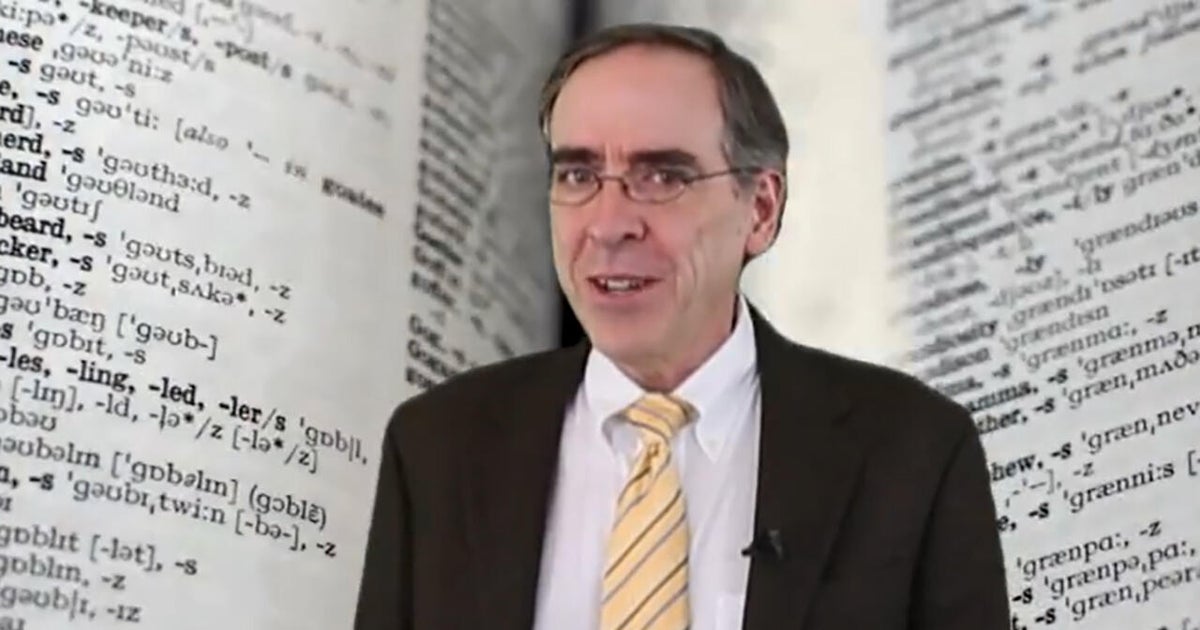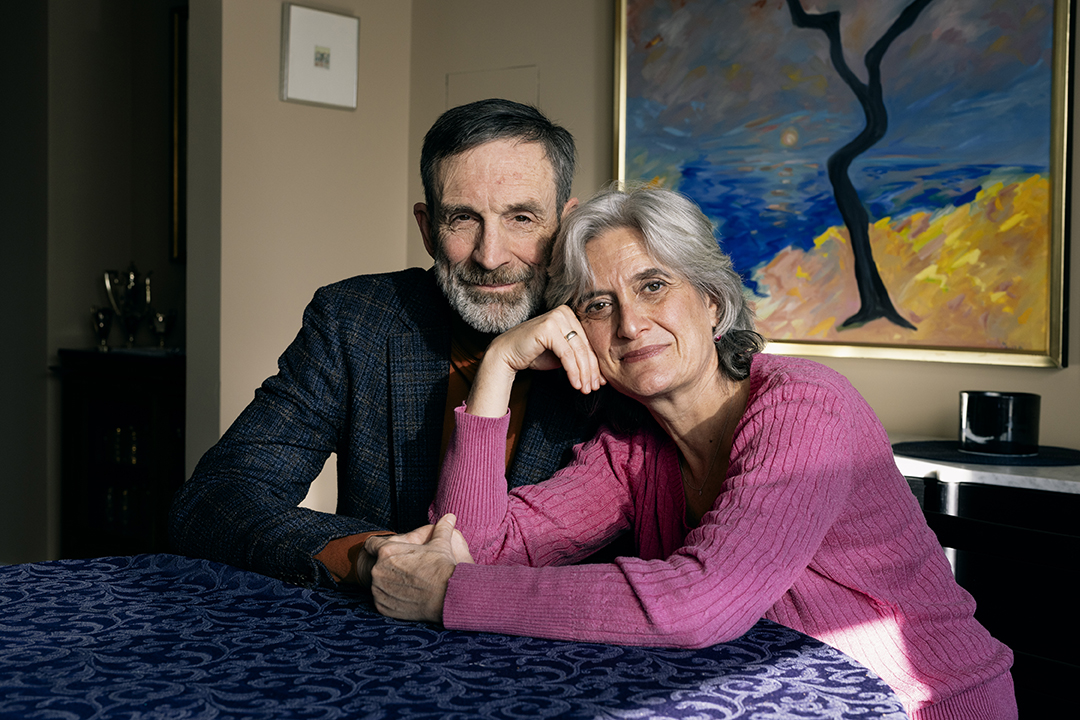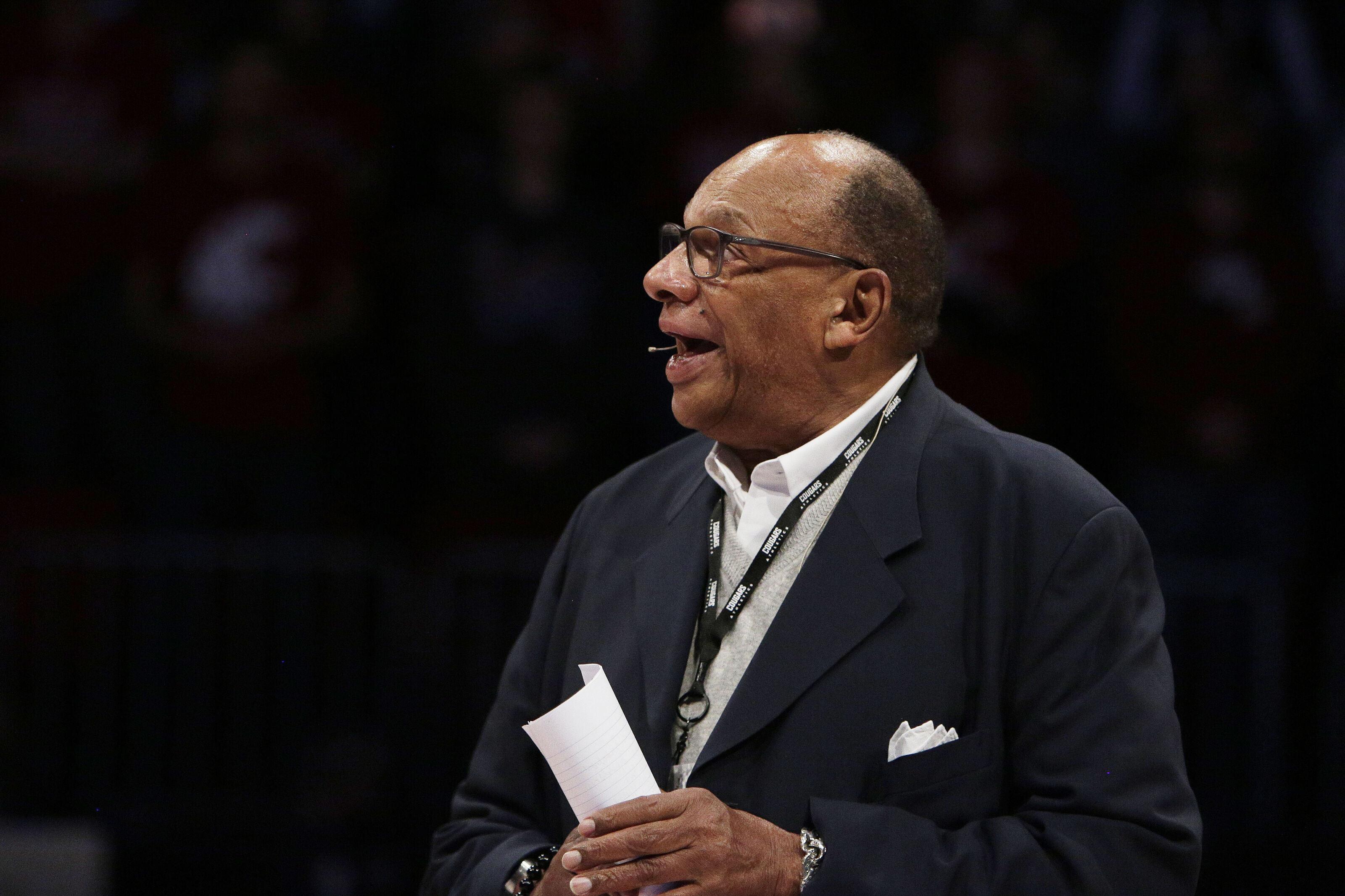The films of Martin Scorsese
Martin Scorsese with Robert De Niro during filming of "Raging Bull" (1980).
The Oscar-winning filmmaker of such classics as "Mean Streets," "Taxi Driver," "GoodFellas" and "The Departed" has continually challenged audiences with vivid stories of crime, ambition, isolation and faith - with a technical proficiency exceeded only by his passion for film.
By CBSNews.com senior editor David Morgan
Student Films
Born in 1942 in New York City, Martin Scorsese grew up in a devout Catholic family, and considered a life in the priesthood. Suffering from asthma, Scorsese could not be outdoors, and so his father took him often to the movies, where he developed a passion for cinema.
He attended New York University, where he shot several student films, including "It's Not Just You, Murray!" (top), a comical piece about a mobster recalling his successes; and "The Big Shave," his allegorical indictment of the Vietnam War.
"Who's That Knocking at My Door"
Harvey Keitel and Zina Bethune in "Who's That Knocking at My Door" (1968), an expansion of a student film that was Scorsese's first theatrical feature. Keitel and the film's editor Thelma Schoonmaker, both fellow NYU students, would become longtime collaborators with Scorsese.
"Boxcar Bertha"
Barbara Hershey in "Boxcar Bertha" (1972). Like many filmmakers of his generation, Scorsese worked for B-movie producer Roger Corman, directing this Depression-Era tale of a woman drawn into a life of crime while battling corrupt forces.
"Mean Streets"
Harvey Keitel in "Mean Streets" (1973), Martin Scorsese's electrifying story of New York criminals that put him onto the world cinema map.
Keitel plays Charlie, an ambitious young mobster whose rise is hampered both by his devout Catholicism and his friendship with a flailing young punk played by Robert De Niro.
"Mean Streets"
Scorsese, with De Niro (left) and Keitel, filming "Mean Streets" in his mother's kitchen.
"Mean Streets"
Harvey Keitel, Amy Robinson and Robert De Niro in "Mean Streets."
Scorsese tells the story that after "Mean Streets" played at the New York Film Festival, and his mother would be asked what she thought of his movies, her reply would be, "I just want you to know we never use that word in the house. . . . I don't know where he got it from. It's probably the street!"
"Alice Doesn't Live here Anymore"
Kris Kristofferson and Ellen Burstyn in "Alice Doesn't Live Here Anymore" (1974), about a widowed single mother and aspiring singer. Burstyn's performance won her an Oscar for Best Actress - just the first in a string of actors who were nominated for or won Academy Awards for their work in a Scorsese film.
"Italianamerican"
The film not only captured the vibrant personalities of the director's parents (they would make cameos in several of his other films as well), but viewers are gifted with Catherine Scorsese's recipe for meatballs.
"Taxi Driver"
Robert De Niro as Travis Bickle, "God's lonely man," in Martin Scorsese's "Taxi Driver" (1975), written by Paul Schrader. The film's shocking violence and nihilism witnessed or perpetrated by De Niro's hack driver turned off many, but the film was immediately hailed as a cinematic masterpiece of urban isolation, winning top prize at the Cannes Film Festival.
"Taxi Driver"
Robert De Niro as Travis Bickle descending further into madness, from a prospective assassin to a White Knight for a child prostitute.
"Taxi Driver"
Scorsese made a cameo appearance in "Taxi Driver" as a fare spying on his cheating wife.
The film, which featured Jodie Foster as an underage prostitute, was said to have later inspired John Hinckley to try to assassinate President Ronald Reagan in 1981. The act prompted death threats against Scorsese, who had FBI protection on the night of the Academy Awards the next day when he and Robert De Niro were up for "Raging Bull."
"New York, New York"
Liza Minnelli and Robert De Niro in "New York, New York" (1977), a post-war musical drama that Scorsese saw as an escape from the gritty realism of his previous movies. The downer ending didn't help the picture find an audience, and the film was cut down and re-released. In 1981 the film was reissued with deleted scenes restored, including for the first time the complete musical number "Happy Endings."
Though "New York, New York" was not a popular success, the film's theme song by John Kander and Fred Ebb became a classic after Frank Sinatra recorded a cover in 1979.
"The Last Waltz"
With "The Last Waltz" (1978), Martin Scorsese helped redefine the modern documentary-concert film, with his record of the final performance of the rock group The Band at the Winterland Ballroom in San Francisco. Joining the group were such music luminaries as Eric Clapton, Neil Diamond, Bob Dylan, Emmylou Harris, Joni Mitchell, Ringo Starr, Muddy Waters and Neil Young.
"I love music films," the director told Mary Pat Kelly, author of "Martin Scorsese: A Journey." "And in 'The Last Waltz' the main thing to consider was that we were sick and tired of all these shots of the people in the audience in most concert films. So we said we were going to stay on the stage. And we stayed on the stage. You see the intensity of the interrelationship of the performers, and you see how they work as a group."
"Raging Bull"
The opening of Martin Scorsese's "Raging Bull" (1980), about prize fighter Jake LaMotta. Praised for its scintillating black-and-white photography by Michael Ballhaus and its editing by Thelma Schoonmaker, the film was a carefully crafted character study of a violent man who could not keep the violence within the boxing ring.
De Niro showed tremendous ability as a fighter in his boxing scenes, and just as realistically gained an enormous amount weight for scenes depicting La Motta as an aged, overweight has-been. The performance won him an Oscar for Best Actor.
Scorsese was nominated for a Best Director Oscar for the first time, but lost to Robert Redford ("Ordinary People").
"The King of Comedy"
Robert De Niro's Rupert Pupkin, a celebrity hound and wanna-be standup comic, tries to worm an appearance on the late-night talk show hosted by Jerry Langford (Jerry Lewis). When his best efforts at getting his big break fail, Pupkin resorts to kidnapping Langford to get on air, in "The King of Comedy" (1983).
Johnny Carson turned down an offer to play Langford, but Lewis brought an amazing bitterness to his performance of a TV icon who comes uncomfortably close to his adoring fans.
"After Hours"
Instead of the urban terror of violence in "Taxi Driver," Scorsese delved into the urban comedy of fear in "After Hours" (1986). Griffin Dunne (center) stars as an office worker who ventures into the jungle of Lower Manhattan for a date, only to get caught up in misadventures that threaten his sanity and his life. Among the cast are Linda Fiorentino, John Heard, Rosanna Arquette, Verna Bloom, Tommy Chong and Teri Garr.
Scorsese won the Best Director Award at the Cannes Film Festival for "After Hours."
"The Color of Money"
In a slick sequel to "The Hustler," Scorsese's "The Color of Money" (1986) follows "Fast Eddie" Felson (Paul Newman) as he backs an up-and-coming pool shark played by Tom Cruise.
The oft-nominated Newman won an Academy Award for Best Actor for his performance in what The New York Times' Vincent Canby called "a white Cadillac" among other mainstream movies.
"The Last Temptation of Christ"
Willem Dafoe as Jesus being visited by a spirit in the desert in "The Last Temptation of Christ."
Nikos Kazantzakis' novel about Christ as a revolutionary against Roman rule and, more intrinsically, the duality of Jesus' nature as both man and divine spirit had a powerful attraction for Scorsese, who for years tried to develop a film version. The controversy over the book and threats of boycotts kept some studios at bay, but after some false starts the film was shot in Morocco with Dafoe, Harvey Keitel, Barbara Hershey, Harry Dean Stanton and David Bowie.
At the heart of the film is its depiction of the crucifixion, at which Christ is lured from the cross by an angel who promises he does not have to die for the sins of the world, as is taught by Christian dogma, but can live as a man. Christ's rejection of this dream state, Scorsese said, marks his acceptance of his divinity.
"The Last Temptation of Christ"
Several theater chains, mostly in the South, refused to show the film, as the fundamentalist activist Rev. Donald Wildmon threatened year-long boycotts against any cinema that showed it. Universal's headquarters was picketed.
On August 12, 1988, approximately 500 protesters outside New York's Ziegfeld Theatre called the film blasphemous. That didn't stop ticket buyers from attending the sold-out shows, though inside they got to see hired security guards standing in front of the screen to prevent vandalism. The fear was real: In Paris a Christian fundamentalist group lobbed Molotov cocktails into one theater showing the film, injuring 14 people.
Though its limited distribution - both theatrically and in video stores - depressed revenue, the film was a critical success, and Scorsese was nominated for an Academy Award.
"New York Stories"
"Life Lessons," the Martin Scorsese-directed segment of the anthology "New York Stories" (1999), stars Nick Nolte as an artist whose obsession over assistant Rosanna Arquette is what fuels his creative output.
"GoodFellas"
"As far back as I can remember, I always wanted to be a gangster."
"Goodfellas" (1990), based on on Nicholas Pileggi's book "Wiseguy," told the true story of Henry Hill, a member of New York's Lucchese crime family who was involved in the 1978 Lufthansa heist that netted about $5 million. Hill ultimately turned state's evidence (ignoring the mob's creed: "Never rat on your friends") and enters the federal witness protection program.
"GoodFellas"
Hill: "Funny. You're really funny."
Tommy DeVito (Joe Pesci): "What do you mean, I'm funny?"
Hill: "You're a funny guy."
DeVito: "You mean the way I talk? What?"
Hill: "It's just, you know. You're just funny, it's . . . the way you tell the story and everything."
DeVito: "Funny how? What's funny about it? . . . Let me understand this: Maybe I'm a little ****** up. But I'm funny how? Funny like I'm a clown? I amuse you? I make you laugh? I'm here to ******* amuse you? What do you mean, funny? How am I funny?"
Hill: "You know, how you tell a story."
DeVito: "No, no, I don't know. You said it. You said I'm funny. How the **** am I funny? What the **** is so funny about me? Tell me what's funny."
Hill: " . . . "
DeVito: "I almost had him! . . . I wonder about you sometimes, Henry. You may fold under questioning."
Pesci, nominated for an Academy Award for "Raging Bull," won the Best Supporting Actor Oscar for "Goodfellas."
"Cape Fear"
Scorsese remade the 1962 thriller "Cape Fear" (about a released convict seeking revenge on the attorney who had put him away years earlier) as a thriller about a corrupt lawyer visited by an avenging angel (or devil, if you will). Robert De Niro starred as Max Cady opposite Nick Nolte's Sam Bowden.
In 1991 Scorsese told David Morgan that his interest in the material was in making Bowden's family conflicted and dysfunctional, only delicately balanced until Cady knocks things out of whack. "There are lots of undercurrents between a husband and wife, father and daughter, mother and daughter, mother and daughter against the father, father and daughter against the mother. And we started to get into all of that, and it became very alive for me.
"Towards the last half, the family at any second threatens to come apart completely. So that's kind of nice. Tension is so funny. When all the doors are closed and a guy has no choices, it's kind of fun to see all the different options being closed away. It's almost like some sort of wry, moral game that's being played."
"The Age of Innocence"
Edith Wharton's "The Age of Innocence" (1993), starring Michelle Pfeiffer and Daniel Day-Lewis, on the surface appeared an unusual choice for Scorsese - his films so often depict the unheeded expression of emotion, rather than its repression.
However, just as his contemporary urban dramas are anthropological studies of clans and communities, "The Age of Innocence" is a study in the hierarchy of a very exclusive community - New York Society in the Gilded Age - and the dangers of going against socially-acceptable codes of behavior.
"The Age of Innocence"
New York City in the 1870s as depicted by its constraining traditions: Winona Ryder in "The Age of Innocence."
"Casino"
Robert De Niro and Joe Pesci were reunited as a Las Vegas casino operator and mob enforcer in "Casino" (1995).
"Casino"
Sharon Stone received an Oscar nomination for Best Actress, playing De Niro's wife, in "Casino."
"Kundun"
"Kundun" (1997), written by Melissa Mathison ("E.T.: The Extra-Terrestrial"), tells the life story of the Tibetan spiritual leader, from his discovery and ascension as the 14th Dalai Lama, to his exile following the takeover of Tibet by the Chinese Communists.
Beautifully photographed by Roger Deakins and featuring a rapturous score by Philip Glass, "Kundun" was transportive in its exploration of the foundations of faith. However, China protested the film and threatened Disney, the distributor, with blocking access to the Chinese market.
"Bringing Out the Dead"
Nicolas Cage and Marc Anthony in "Bringing Out the Dead" (1999), based on the novel by Joe Connelly, about a New York City EMT haunted by the ghosts of lives he could not save.
"Gangs of New York"
"Gangs of New York" (2002) was an epic story of warring factions in the notorious Five Points section of New York City in the mid-1800s. After working for years to bring his adaption of Herbert Asbury's 1928 book to the screen, Scorsese's realization earned him an Oscar nomination for Best Director.
"Gangs of New York"
Shot at Cinecitta Studios in Rome, the film vividly recreated Five Points as well as more patrician settings, including Tammany Hall.
"Gangs of New York"
In addition to Leonardo diCaprio and Cameron Diaz, "Gangs of New York" starred Daniel Day-Lewis as crime lord Bill "The Butcher" Cutting, a performance that earned the actor an Oscar nomination.
"The Aviator"
In "The Aviator" (2004), Leonardo diCaprio starred as Howard Hughes, the industrialist-filmmaker-aviation tycoon whose obsessive-compulsive disorder leads to paranoid fantasies while his ambition to become the richest man on the world leads to increasingly dangerous behavior.
"The Aviator"
"The Aviator" was nominated for 11 Academy Awards (including Best Director), and won five Oscars, including Best Film Editing, Cinematography, Art Direction, Costume Design, and Best Supporting Actress (Cate Blanchett, pictured, as Katharine Hepburn).
"The Departed"
Leonardo diCaprio and Jack Nicholson in "The Departed" (2006). A remake of the Hong Kong gangland thriller "Infernal Affairs," the film tells of an undercover officer (DiCaprio) infiltrating the organization of Boston crime boss Frank Costello (Nicholson) - unaware that Costello has planted his own compatriot inside the Massachusetts State Police's unit investigating organized crime.
The dense and twisting thriller - ripe with rich characterizations from its all-star cast - won for Scorsese his first Academy Award as Best Director.
"The Departed"
Jack Nicholson and Martin Scorsese on the set of "The Departed."
"Shine a Light"
The Rolling Stones' Mick Jagger with director Martin Scorsese and cinematographer Robert Richardson during filming of the concert film "Shine a Light."
"Shutter Island"
Leonardo diCaprio worked with Scorsese for a fourth time in the mystery "Shutter Island" (2010), adapted from the novel by Dennis Lehane. Pictured here with Michelle Williams, diCaprio plays a U.S. Marshal investigating the disappearance of a patient at a hospital for the criminally insane.
The moody, affecting thriller became the top-grossing movie of Scorsese's career.
"Shutter Island"
Martin Scorsese on the set of "Shutter Island" with Ben Kingsley (as the hospital's head psychiatrist), Leonardo diCaprio, and Mark Ruffalo as diCaprio's fellow U.S. Marshal.
Scorsese described to Lesley Stahl his experience coming off of shooting "Shutter Island" as being "Down so low, in the beginning of the editing of the film. Once I finished the shoot . . . it was very difficult for me to even leave the house. Somehow it was so oppressive, the making of that film - not with the actors, I'm talking about the mood and the tone of it, and the story, and you didn't know if anybody was telling the truth. [Or] even if they existed, you know? What is real, what isn't real? Who's dead or who's not? It really got me. That first two or three months, I was very, very down about it and very depressed about everything. And then, finally, somehow the picture came through. But after that, I didn't want to go back there."
"Hugo"
In "Hugo," Asa Butterfield stars as a young boy who lives alone within the walls of a Parisian train station, winding and repairing clocks, all the while trying to evade detection by the stationmaster.
"Hugo"
Growing up suffering from asthma, Scorsese often found himself staring out of the window, unable to join friends on the street. "That, I think, was the first connection" to the character, Scorsese said. "I loved the idea of a young person who's unable to join in, 'cause of me with my asthma and that sort of thing. . . . Because of this illness, I really couldn't participate. I was always observing," like a voyeur.
And like Scorsese, who discovered new worlds when his father took him to the movies, Hugo's world is opened up when he discovers the work of a lost master of cinema.
"Hugo"
For "Hugo," Scorsese recreated the productions of French film pioneer George Melies' early fantasies.
"Melies actually was a magician, and so he understood the possibilities of the motion picture camera," Scorsese told Lesley Stahl.
"Hugo" received 11 Academy Award nominations, including Best Picture and Best Director, and won five Oscars - for cinematography, production design, visual effects, sound editing and sound mixing.
"Hugo"
Director Martin Scorsese on the set of "Hugo," based on Brian Selznick's book, "The Invention of Hugo Cabret." He was encouraged by his wife to make the film, he said, so that his young daughter would be able to see one of his movies!
The child-centered story (Spoiler alert: No one gets whacked!) was not just the director's first film shot digitally in 3-D, but also a remarkable change of pace, coming off of "Shutter Island."
"Have I mellowed, in a sense?" Scorsese mused. "The story for me was something that opened up a whole new way of approaching cinema. But primarily, it really is a connection with the children."
"Hugo"
Director Martin Scorsese makes a cameo appearance as a photographer in "Hugo."
Scorsese told Stahl that he could see himself creating narrative films for the Internet: "I'm open to trying that venue, because right now, we're at a time . . . there's great transformations taking place in communication, the same way as the period of Georges Melies."
"The Wolf of Wall Street"
"The Wolf of Wall Street" stars Leonardo diCaprio as real-life Wall Street stockbroker Jordan Belfort, whose memoir charted his rise and fall, showcasing a high-flying lifestyle that was in no way legal.
"The Wolf of Wall Street"
Director Martin Scorsese and Leonardo diCaprio on the set of "The Wolf of Wall Street." It was their fifth collaboration -- a partnership that has proven as artistically challenging as Scorsese's collaboration with Robert De Niro.
"The Wolf of Wall Street"
Jonah Hill and Leonardo diCaprio in "The Wolf of Wall Street."
Also featured in the cast are Matthew McConaughey ("Mud"), Jean Dujardin ("The Artist"), and Kyle Chandler ("Zero Dark Thirty").
"The Wolf of Wall Street"
"This right here is the land of opportunity. This is America!" says Leonardo diCaprio as Jordan Belfort in "The Wolf of Wall Street," an anthropological exercise by filmmaker Martin Scorsese.
"Silence"
In "Silence" (2016), Andrew Garfield is a Jesuit priest in 17th century Japan who, with fellow priest Adam Driver, goes in search of a missing colleague, played by Liam Neeson.
The film examines both the persecution of the faithful (at a time when Christianity was outlawed in Japan), the adherence to or renunciation of religion in the face of political or social oppression, and the personal costs of exile.
"Silence"
Three Christians – persecuted for their faith in Edo-era Japan – are martyred via drowning in the incoming tide in a grueling scene from Martin Scorsese's "Silence."
"You are put to the test: how much can you take before you crack?" Scorsese said to Film Comment magazine. "How could you judge another person for falling out of grace, when you haven't been put to the test?
"It reminds me of when I was about 8 years old during the Cold War. The most frightening thing was the image of the POWs who had been brainwashed. Like, their souls were taken away. They came back and they were shunned by society. And was that the right thing to do to them? Where was the compassion? What about their suffering? This, for me, is something that is troubling, and I guess that's why the material has always been so important to me. Maybe it's for my own use of going deeper in the story of the concept of true Christianity."
"The Irishman"
In 2019 Scorsese directed a long-in-the-works film of "The Irishman." Adapted from Charles Brandt's 2004 bestseller, "I Heard You Paint Houses," it is a mob epic of loyalty and corruption, centered around mob hit man Frank "The Irishman" Sheeran (played by Robert De Niro).
The film costars Al Pacino, who plays Teamsters Union president Jimmy Hoffa. Joe Pesci ("GoodFellas"), Harvey Keitel ("Mean Streets") and Ray Romano.
"The Irishman"
The film spans several decades, and so it employs a revolutionary new CGI-assisted technology that could "de-age" the actors, allowing De Niro, for one, to appear in his 20s, up into his 80s. "It'll add 30 years to my career!" he laughed. "No complaints."
But the technology didn't come cheap; it helped balloon the film's budget to nearly $160 million. Major studios balked, so Netflix jumped in to bankroll the three-and-a-half-hour film.
"It's a whole new game out there," Scorsese told Cowan. "We don't know where this is gonna go. The fact is that this film is made by Netflix. They stepped up. No interference. None. Allowed us to experiment with the CGI, all of that sorta thing."
"And if they hadn't, it never woulda gotten made?" asked Cowan.
"No, never would have gotten made, because they don't wanna make the pictures I wanna make out there. It's over. It's finished."
"The Irishman"
Martin Scorsese at the monitor, conducting the performance of Al Pacino as Jimmy Hoffa.
"It's tantamount of being, you're without a net, and you don't care," Pacino told "Sunday Morning' correspondent Lee Cowan. "Because you can do anything, 'cause you know somehow he's the net. He will take care of it. Whatever you do – go in this direction, that direction – you're safe."
The film represents the first collaboration of Scorsese with Pacino. "All I can say is, it's about time," the "Godfather" star said.
"The Irishman" earned 10 Academy Award nominations, including for Scorsese. It was his ninth Best Director nomination, the most of any living filmmaker.
